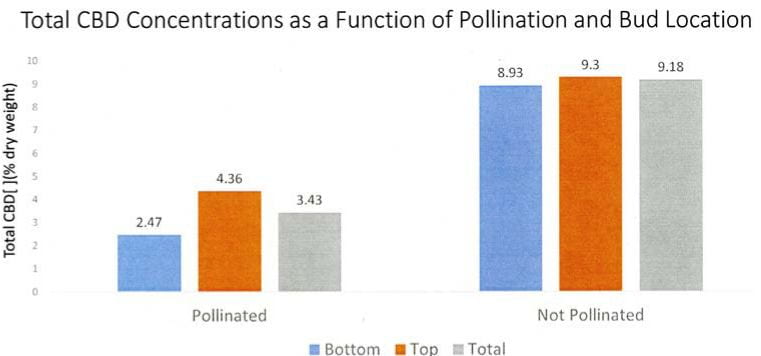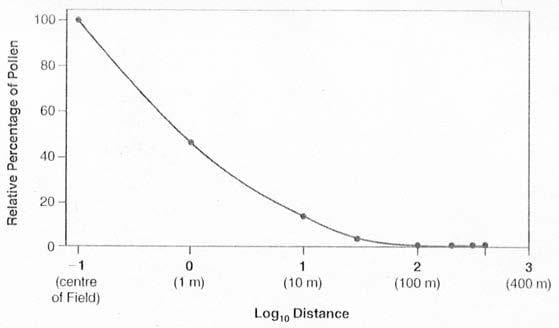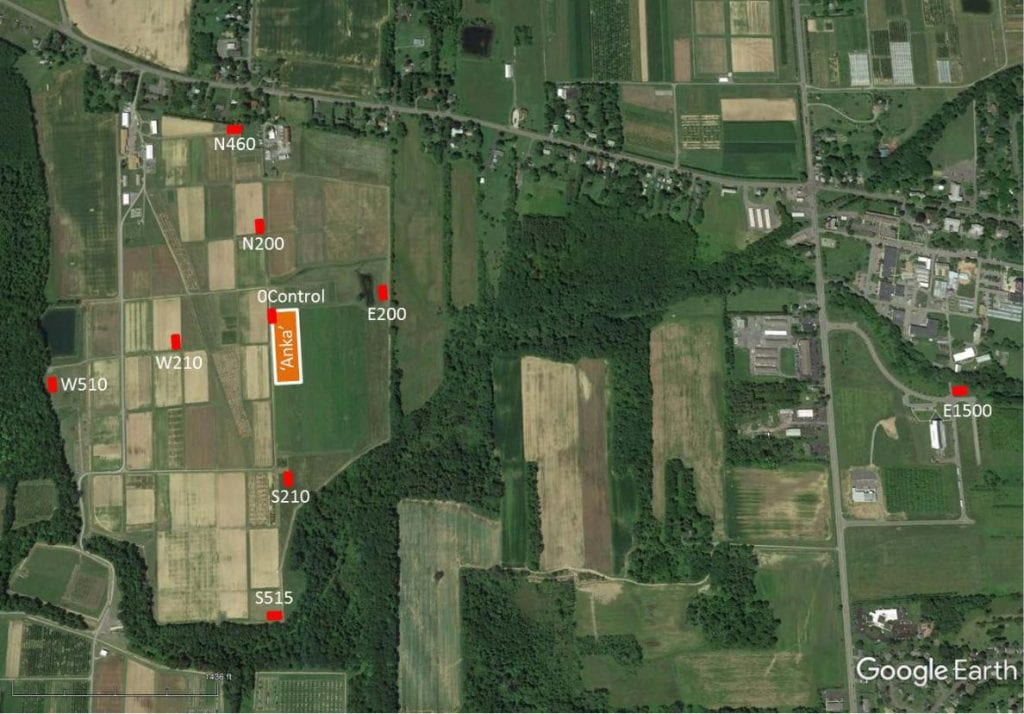Click here for a printer-friendly version of this document.
Authors
Larry Smart, Chris Smart, Rebecca Wilk, and George Stack
Production of cannabinoids drops after pollination
Pollination of fields of female hemp plants is a major concern because cannabidiol (CBD) production drops 2- to 3-fold upon pollination.

Industrial hemp is wind-pollinated
Hemp pollen is carried to female flowers by the wind. Long-distance movement (>10 miles) of pollen has been suggested, but there is little published data to support this. Experiments by Small and Antle (2003, J. Indus. Hemp 8:37) with pollen traps indicated there was pollen rain at 400 m, but it was <1% of total pollen rain. They did not survey the actual pollination of female plants.

Pollination distance trial
We planted a ~3 acre field of the monoecious cultivar ‘Anka’ as a pollen source, surrounded by microplots with female plants of three CBD cultivars at 0 m (control), ~200 m, ~400-500 m, and 1,500 m to the east. Male plants and male parts on female plants have been actively removed.

Cultivars/lines in our 2018 trials
| Cultivar/Line | Company source | Breeder/Provider |
| Otto II | Winterfox Farms, Eagle Point, OR | Edgar Winters |
| Wild Horse | Winterfox Farms, Eagle Point, OR | Edgar Winters |
| A2-R4 | Winterfox Farms, Eagle Point, OR | Edgar Winters |
Quantifying pollination and impact on CBD production
We will survey for seed set on each plant and at the end of the season harvest seeds and weigh seed production for each plant. Cannabinoids will be analyzed from flower buds and whole plants for each plant in the microplots to determine the impact of pollination on CBD production.
For results, please see our handout titled, “2018 Cannabinoid production analysis.”